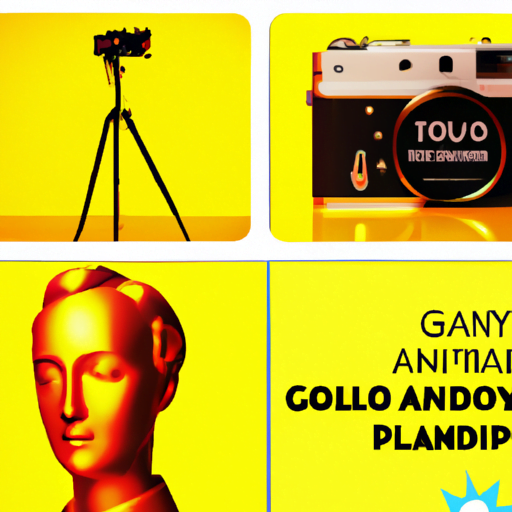-
Table of Contents
Exploring Retro Design Revivals
In recent years, there has been a resurgence of interest in retro design. From fashion to interior design, the nostalgia for past eras has become a prominent trend. This article will delve into the reasons behind the popularity of retro design revivals, the impact it has on various industries, and the key elements that define retro design. By examining case studies and statistics, we will gain valuable insights into this fascinating phenomenon.
The Allure of Nostalgia
One of the main reasons for the popularity of retro design revivals is the allure of nostalgia. People are often drawn to the past, seeking comfort and familiarity in a rapidly changing world. Retro design allows individuals to reconnect with their personal memories and experiences, evoking a sense of nostalgia that can be both comforting and exciting.
For example, the resurgence of vinyl records in the music industry can be attributed to the nostalgia associated with the format. Despite the convenience of digital music, many people are drawn to the tactile experience of handling vinyl records and the warm sound they produce. In fact, vinyl sales have been steadily increasing over the past decade, with a 29.2% increase in sales in 2020 alone.
The Impact on Fashion
Retro design revivals have had a significant impact on the fashion industry. Designers often draw inspiration from past decades, reinterpreting iconic styles and trends for a modern audience. This fusion of old and new creates a unique aesthetic that appeals to a wide range of consumers.
One notable example is the revival of 90s fashion. From high-waisted jeans to oversized flannel shirts, 90s-inspired fashion has become incredibly popular in recent years. This trend can be seen in the collections of major fashion brands and the wardrobes of influencers and celebrities. According to a report by Edited, mentions of 90s fashion on social media increased by 171% in 2020.
The Influence on Interior Design
Retro design revivals have also made a significant impact on interior design. Mid-century modern design, characterized by clean lines, organic shapes, and minimalist aesthetics, has experienced a resurgence in popularity. This design style, popularized in the 1950s and 1960s, has become a staple in contemporary interiors.
One of the reasons for the enduring appeal of mid-century modern design is its timeless quality. The clean and functional designs of this era continue to resonate with modern homeowners. According to a survey conducted by Houzz, 33% of homeowners in the United States incorporated mid-century modern elements into their home renovations in 2020.
The Key Elements of Retro Design
Retro design is characterized by several key elements that define its aesthetic. These elements vary depending on the era being referenced, but some common features include:
- Bold colors and patterns
- Geometric shapes
- Vintage typography
- Use of natural materials
- Iconic furniture designs
For example, the psychedelic patterns and vibrant colors of the 1960s are often associated with retro design. The use of bold, contrasting colors and abstract shapes creates a visually striking and energetic aesthetic.
Case Study: Coca-Cola’s Retro Campaign
Coca-Cola, one of the world’s most recognizable brands, has successfully utilized retro design in its marketing campaigns. In 2011, the company launched the “Share a Coke” campaign, which featured personalized bottles with popular names and retro-inspired designs.
The campaign was a huge success, generating a 2% increase in sales in the United States and a 7% increase globally. The retro-inspired designs resonated with consumers, tapping into their nostalgia for the brand’s iconic imagery from the past. The campaign also encouraged social media engagement, with consumers sharing photos of their personalized bottles online.
The Future of Retro Design
As the popularity of retro design revivals continues to grow, it is clear that this trend is here to stay. The allure of nostalgia and the timeless appeal of retro aesthetics will continue to influence various industries, from fashion to interior design.
However, it is important for designers and brands to strike a balance between nostalgia and innovation. While retro design can be a powerful tool for connecting with consumers, it is essential to infuse it with fresh ideas and modern sensibilities. By combining the best elements of the past with contemporary design principles, designers can create compelling and relevant retro-inspired experiences.
Summary
Retro design revivals have become a prominent trend in recent years, driven by the allure of nostalgia and the desire for familiarity in a rapidly changing world. This trend has had a significant impact on various industries, including fashion and interior design. The key elements of retro design, such as bold colors, geometric shapes, and vintage typography, define its aesthetic. Case studies, such as Coca-Cola’s successful retro campaign, highlight the effectiveness of retro design in marketing. As the popularity of retro design continues to grow, it is important for designers and brands to balance nostalgia with innovation to create compelling and relevant experiences.
